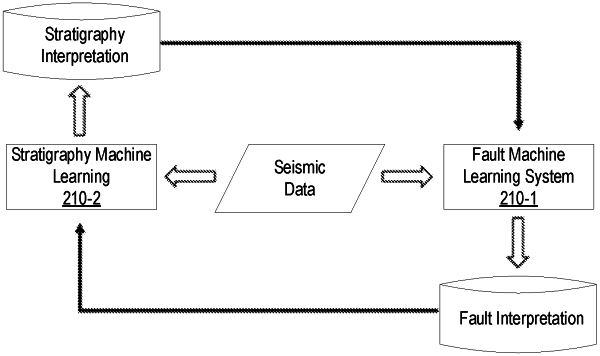| CPC G01V 1/301 (2013.01) [G06N 3/08 (2013.01); G01V 20/00 (2024.01); G01V 2210/612 (2013.01); G01V 2210/6161 (2013.01); G01V 2210/642 (2013.01); G01V 2210/646 (2013.01); G06F 30/27 (2020.01)] | 20 Claims |

|
1. A computer-implemented method comprising:
receiving a test seismic dataset associated with a known truth interpretation;
receiving one or more hard constraints;
training a machine learning system based on the test seismic dataset, the known truth interpretation, and the one or more hard constraints;
determining an error value based on the training the machine learning system;
adjusting the error value based on one or more soft constraints;
updating the training of the machine learning system based on the adjusted error value;
receiving a second seismic dataset after the updating the training;
applying the second seismic dataset to the machine learning system to generate an interpretation of the second seismic dataset;
generating a seismic image representing a subterranean domain based on the interpretation of the second seismic dataset; and
outputting the seismic image.
|